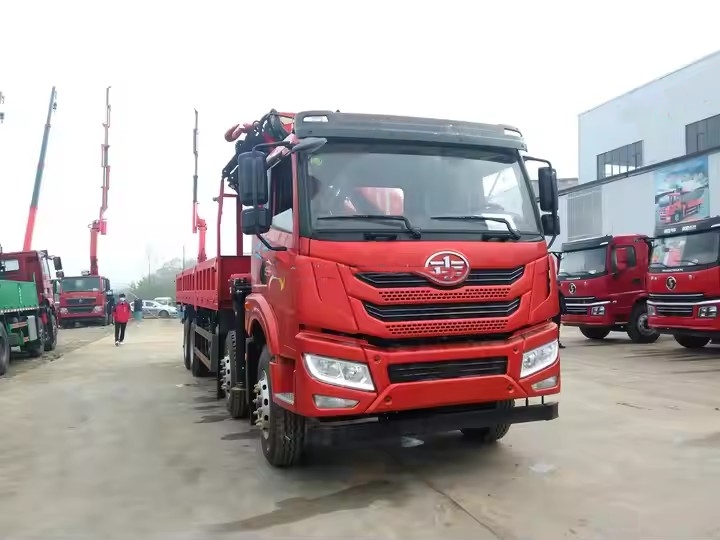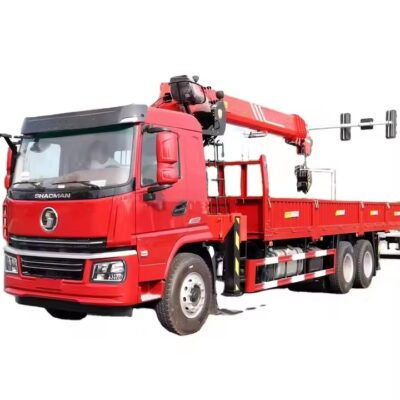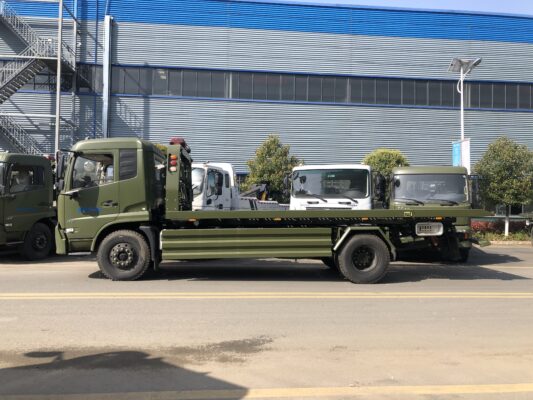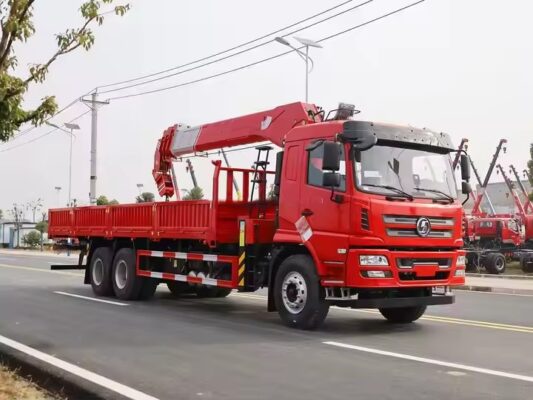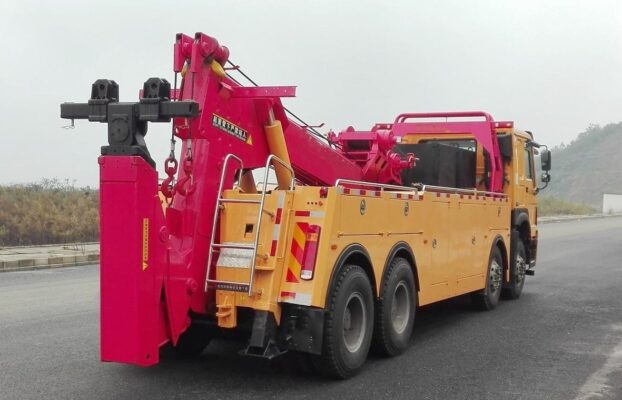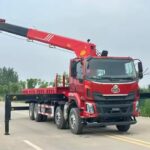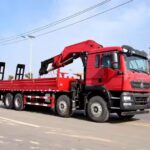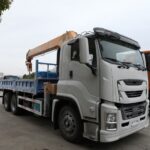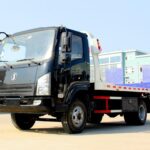As a type of lifting and transportation machinery, 大きい tower cranes are prone to rust and corrosion due to various unresolved issues. The steel structures of large tower cranes are particularly susceptible to rusting when exposed to air for extended periods without adequate protective measures. This corrosion occurs when the steel structure reacts chemically with gases or liquids in its environment, leading to material degradation. The problem is exacerbated in polluted atmospheres where aggressive chemical agents are present. Even with protective paint coatings, the steel structure can deteriorate over time due to exposure to wind, sunlight, temperature fluctuations, humidity, mold, and mechanical impacts. Once the protective coating is compromised, the corrosion process accelerates, negatively affecting the structural integrity, durability, and safety of the crane. したがって, it is essential to analyze the causes, patterns, and risks of rust in steel structures to implement effective corrosion prevention strategies.
1. The Dangers of Rust in Large Tower Crane Steel Structures
Rusting in large tower crane steel structures leads to a reduction in surface thickness, often in a uniform manner, but can also result in severe localized pitting. These pits cause stress concentrations, which can lead to early structural failure. This is especially dangerous for components subject to dynamic loads or used in low-temperature environments, where rust-induced weakening significantly reduces the permissible fatigue stress and cold-brittleness resistance of the steel. If corrosion becomes severe, it not only impairs the crane’s operational performance but can also cause catastrophic failures, such as crane collapses, leading to serious injuries or fatalities.
2. General Patterns of Corrosion in Large Tower Crane Steel Structures
According to data from the National Crane Equipment Testing Center:
- Unpainted or poorly coated steel structures corrode at varying rates, with the highest rates occurring in the initial stages and slowing down over time.
- The severity of corrosion varies depending on location. Coastal and highly polluted industrial areas experience more severe corrosion.
- Seasonal variations affect corrosion rates; during the rainy season, rusting is particularly accelerated.
- Painted or electroplated steel structures corrode at a rate approximately five times slower than unprotected steel.
- Outdoor crane structures corrode about four times faster than indoor ones.
3. Causes of Rust and Protective Coating Damage in Large Tower Crane Steel Structures
The corrosion of steel structures in large tower cranes, as well as the deterioration of protective coatings, is influenced by factors such as environmental temperature and humidity, airborne pollutants, dust levels, structural exposure conditions, painting quality, and material properties. The main causes include:
3.1 Chemical Corrosion
Chemical corrosion occurs when non-electrolyte substances or dry gases react chemically with the steel structure. 例えば, oxidation at high temperatures leads to the formation of iron oxides.
3.2 Electrochemical Corrosion
This type of corrosion, also known as galvanic corrosion, occurs when the steel structure comes into contact with an electrolyte solution, generating an electrical current that facilitates rusting. Tower crane steel structures, mainly composed of iron and carbon alloys, develop a thin layer of moisture on their surface in humid air. This moisture, though slightly ionized, acts as an electrolyte. さらに, pollutants like carbon dioxide and sulfur dioxide dissolve in water to form acidic solutions, increasing hydrogen ion concentration. These conditions lead to the formation of microscopic galvanic cells, where iron serves as the anode and carbon as the cathode, accelerating corrosion and the formation of iron oxides.
3.3 Incomplete Removal of Mill Scale
Mill scale, a type of iron oxide that forms on hot-rolled steel surfaces, adheres tightly to the metal, making it difficult to remove. If not fully eliminated before painting, it creates weak points where corrosion can begin, eventually causing the paint layer to peel off and exposing the underlying steel to rust.
3.4 Delay in Applying Primer After Cleaning
Once the steel structure is cleaned, any delay in applying a protective primer allows atmospheric moisture and contaminants to interact with the bare metal, initiating rust formation.
3.5 Inadequate Rust Removal
If residual rust is not completely removed before painting, corrosion continues beneath the paint layer. This ongoing oxidation expands, causing the protective coating to crack and peel, thereby accelerating structural deterioration.
3.6 Presence of Welding Slag
Failure to remove welding slag before painting results in ongoing corrosion beneath the paint, as slag components, including metal oxides and inorganic salts, react with the environment and degrade the protective layer.
3.7 Residual Oil and Grease Contamination
Oil, grease, and lubricants left on the steel surface can interfere with paint adhesion and drying, leading to an uneven coating that is prone to failure and rust penetration.
3.8 Old Paint Layers Not Properly Removed
When repainting steel structures, failing to remove old, damaged paint results in poor adhesion of new coatings. This leads to flaking and further corrosion, a common issue in large tower cranes.
3.9 Skipping Primer Application
Primer serves as a bonding layer between the steel and the topcoat. It contains a high pigment concentration and strong adhesion properties, providing excellent rust resistance. Omitting the primer weakens the overall protection and reduces the lifespan of the crane structure.
3.10 Inappropriate Paint Selection
Different types of paint have unique properties and must be correctly matched. If incompatible primer and topcoat combinations are used, the solvent in the topcoat may dissolve the underlying primer, reducing its effectiveness and causing rusting.
4. Preventive Measures Against Rust in Large Tower Crane Steel Structures
4.1 Consideration of Environmental Factors
Crane positioning should take environmental factors into account. Ideally, cranes should be placed upwind of facilities emitting corrosive gases to minimize exposure to aggressive airborne chemicals.
4.2 Thorough Surface Preparation
Before painting, all contaminants such as grease, rust, mill scale, welding slag, and old paint must be completely removed using appropriate methods such as manual scraping, acid pickling, or sandblasting. The steel surface should appear silver-gray, ensuring optimal paint adhesion and long-lasting protection.
4.3 Proper Paint Application
A two-layer coating system—primer followed by topcoat—should always be used. These layers must be carefully selected for compatibility, ensuring strong adhesion. 例えば, phosphating primer or iron red alcohol-based primers provide excellent adhesion for certain topcoats.
4.4 Optimal Painting Conditions
Painting should be conducted under favorable conditions, such as dry, well-ventilated indoor environments, to prevent contamination by rain, fog, dust, or extreme temperatures. The ideal painting temperature range is 15-35°C. If the temperature is below 5°C or above 35°C, painting should be postponed unless special measures are taken.
4.5 定期メンテナンス
Large tower cranes should undergo rust removal and repainting during installation or dismantling. Mobile cranes, しかし, require annual inspections. Any signs of paint degradation, such as loss of gloss, cracking, or rust penetration, should be addressed immediately to extend the crane’s service life and maintain safety.
By implementing these measures, the rusting of steel structures in large tower cranes can be effectively controlled, ensuring their longevity, operational efficiency, and structural safety.

